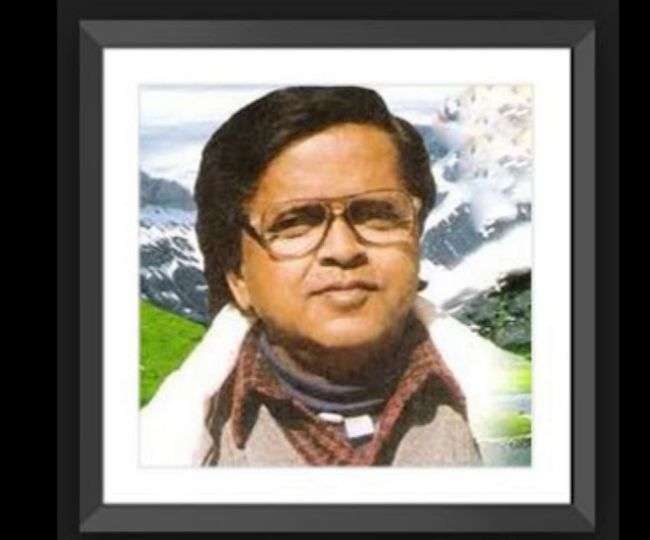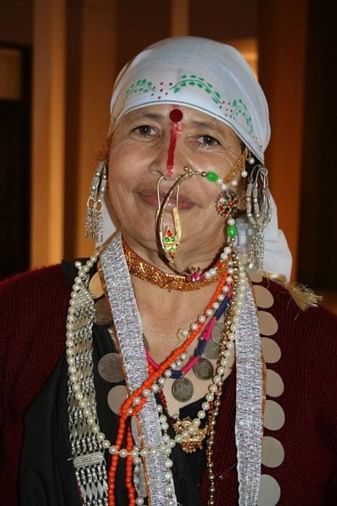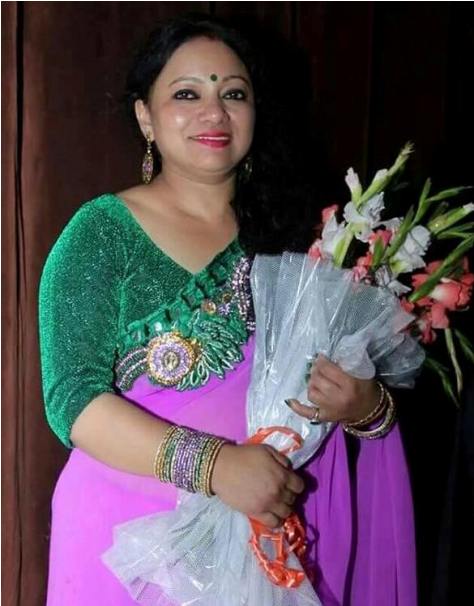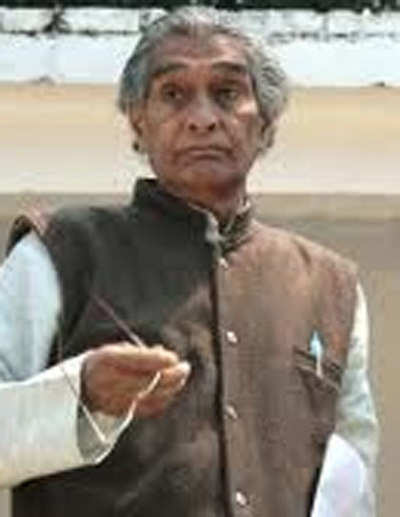TYPES OF MUSIC AND DANCES
| Folk music of Uttarakhand refers to the traditional and contemporary songs of Kumaon and Garhwal regions in the foothills of Himalayas. This music has its root in the lap of nature and the hilly terrain of the region.Traditional musical instruments used in Uttarakhandi music include the dhol, damaun, turri, ransingha, dholki, daur, thali, bhankora and mashakbaja. Tabla and harmonium are also sometimes used, especially in recorded folk music from the 1960s onwards. In recent years, Uttarakhandi folk songs have undergone transformation. Generic Indian and global musical instruments have been incorporated in modern popular folks by singers like Narendra Singh Negi, Gopal Babu Goswami, Mohan Upreti, Chander Singh Rahi etc. Modern themes include geo-political issues affecting the region, humour, nostalgia for the hills by the |
The earliest of the singers who left never ending impressions on the folk music of Uttarakhand are
 |
| NARENDRA SINGH NEGI |
1. Narendra Singh Negi : He has sung in every style of singing popular in Uttarakhand be it Jagar, Chaumasa, Thadya or Playback. He has sung in different local languages (boli) like Garhwali, Kumaoni, Jaunsari prevailing in the state. He started his music career by releasing "Garhwali Geetmala". These Garhwali Geetmalas came in 10 different parts. His first album came with the title called "Burans". Burans is a well-known flower found on hills.He has released most number of super-hit albums. He has also given his voice in many Garhwali movies like "Chakrachal", "Gharjawain", "Meri Ganga Holi Ta Maima Aali" etc. This renowned singer from Garhwal has sung more than 1000 songs till now. Although he mostly composes his music in the folk genre, his lyrics depict a huge range of anxieties, tensions and human insights of the people of Uttarakhand. His Song "Tehri Dam" and "Nauchhami Naraina" created a wave. "Tehri Dam" was the story of displacement of locals from their land and Nauchhami Naraina was a political satire on then Chief Minister of Uttarakhand Narayan Datt Tiwari. He is widely considered as an inspirational figure in cultivating and popularizing the sounds and rhythms of Uttarakhand.
 |
| MOHAN UPRETI |
2. Mohan Upreti: A famous folk-singer from Kumaon, Mohan Upreti is known for his Nanda Devi Jagar & Rajula Malushahi Ballad.[1]His iconic Kumaoni song Bedu Pako Baro Masa is fondly referred to as the cultural anthem of Uttarakhand[2]. It is said that this song was also a favourite of former Prime Minister of India Jawahar Lal Nehru who heard it in a band march as this song is also the official regiment song of the Kumaon Regiment of Indian Army. This iconic song has been covered by various artists and dance groups all over the world.
 |
| GOPAL BABU GOSWAMI |
3. Gopal Babu Goswami who is considered to be a legend in Uttarakhand for his melodious voice.[3] His songs on the life of the members of the armed forces and their families, like Kaile Baje Muruli, Ghughuti Na Basa and many others are legendary, it is said that when these songs were transmitted on the All India Radio, women with their husbands working far away from the Uttarakhand hills could not help but weep, missing their husbands when they heard the soul touching voice of Gopal Da as he was lovingly called.
| CHANDER SINGH RAHI |
4. Chander Singh Rahi fondly called the “Bhishma Pitamaha of Uttarakhand folk music” for his deep devotion to the music of Uttarakhand[4] curated more than 2500 folk songs from Uttarakhand and gave his voice to more than 500 songs of Garhwali and Kumaoni language.[5] He was also a talented musician, poet, and song-writer. He is known for his Uttarakhandi songs including 'Sarag tara', 'Bhana hai rangeeli bhana', 'Sauli ghura ghur', 'Saat samundar paar', 'Hilma chandi ku', and 'Jara thandu chla di'. He was also the first singer to sing a ghazal in Garhwali language known as Teri Mukhiri'. Rahi has been an inspiration was for many later Garhwali singers. Garhwali singer Narendra Singh Negi has cited Chandra Singh Rahi as his inspiration.[5] Rahi's popular songs Phyonlariya and traditional Anchari Jagar - Chaita Ki Chaitwali were remade by popular Garhwali singers in 2016 and 2018 respectively.
 |
| BAANTI DEVI BISHT |
5. Basanti Devi Bisht is a famous singer from Uttarakhand specialising in Jagar music.
 |
| MEENA RANA |
6. Meena Rana is the most recorded female singer from Uttarakhand.
 |
| HEERA SINGH RANA |
7. Heera Singh Rana is identified as a singer and a poet of whose songs are known to describe the pain of the people of the
8. Girish Tiwari 'Girda' was a scriptwriter, director, lyricist, singer, poet, organic culturist, literary writer, and social activist in Uttarakhand, India.
 |
| GIRISH TIWARI |
Some famous songs and albums from Uttarakhand include Fauji Lalit Mohan Joshi's "Maya Ki Yaad", "Tak Taka Tak Kamla"; Gajendra Rana's "Malu", "Rani Gorkhani", "Lila Ghasyari", "Pushpa"; Pritam Bharatwan's "Saruli" and "Rajuli".
Also, with an advance in the technology and easy availability of video cameras and other recording devices, lots of talents have started producing music albums, which has further led to the popularisation of the various folk dance forms of Uttarakhand. In fact, Kumaoni/Garhwali songs have gained so much popularity over the years that they have become integral part of the DJ Music played during wedding and other functions.
DANCE
Barada Nati, Bhotiya Dance, Chancheri, Chhapeli, Choliya Dance, Jagars, Jhora, Langvir Dance, Langvir Nritya, Pandav Nritya, Ramola, Shotiya Tribal Folk Dances, Thali-Jadda and Jhainta are some of the folk dances performed in various occasions in Uttarakhand.
Barada Nati
The Barada Nati folk dance is a popular dance of the Jaunsar Bhawar area of Chakrata Tehsil in Dehradun district. The folk dance is performed on the eve of some religious festivals or on the occasion of some social functions. Both boys and girls take part in the dance dressed in colourful traditional costumes.
Chancheri
This is a group dance of Danpur Patti region of Bageshwar District in Kumaon. Both men and women dance in a semi-circular formation with gradually increasing pace putting across unbridled joy.
Chhapeli
Chhapeli dance is performed by couples with the female carrying a mirror in her left hand and a colored handkerchief in the other. The male plays a Hudukka on his left shoulder accompanied by others playing the Hurka, Manjira and Flute. The dance is a duet that outlines the joys of romance. The woman partner (sometimes also a young boy) dances with a smile and elegant waist movements, either in admiration of her beauty and charm or mocking her ways of expressing love.
Choliya Dance
Keeping the old tradition alive, the Rajputs dance this at their weddings as a part of the marriage procession itself, led by the male dancers who go on dancing till they reach the bride's house. Performed by the Rajputs with sword and shield in pairs, the drummers are usually Harijans called Dholies, while the Turi and Ransing are played by Bairagis, Jogis or Gosains. The Turi and Ransing are typical Kumaon instruments. Perfectly synchronized, and marked with jumps and turns of the body, the dancers show several sword-fighting feats. Attired in the material costumes of ancient warriors, the flashing swords and shields, along with the war-like music, huge red flag with various animal symbols stuck on it conveys fear, joy, awe and wonder, through eyes, eyebrows and shoulders, creating at the same time, the impression of group advancing for an attack.
Jagars
Jaggar falls in the category of ghost and spiritual worship, in the form of a folk song or at times combined with dances. Sometimes, Jaggar may also be in the form of Puja folk songs and are sung in .honour of the various gods and goddesses.
Jhora
A community dance, when all barriers of castes are thrown to the winds, except in the village, where the high and lower castes have separate Jhoras, it is danced at fairs to the accompaniment, of singing that grows with the dance.
Performed either in the morning or evening, they are danced at the coming of spring, mostly at fairs, but also to celebrate weddings. From the minimum, number, six, it swells to 200 at times, men and women both joining in. Together they move in a circle, holding each other's arms and slight1y bending their bodies forward as they move. On the first beat of the Hurka, the left leg crosses the right, striking the floor with the left foot. On the second beat, the right foot is thrown sideways with a slight jump and little dip and the performers return to their original standing pose, with the bodies swaying slightly to the back. The third and fourth steps are given to the left and right foot respectively. Each step is taken with a slight jump and the accompanying neck and shoulder movements. This completes one cycle. If the circle is big the Hurka players, accompanied by the cymbals and, flute dance inside the circle, singing and playing simultaneously, rending the air joyous with exhilaration. The men and women dancers, themselves provide the singing following the lead of the Hurka player-the women follow the men-the tempo remains the same neither very fast nor very slow.
Performed either in the morning or evening, they are danced at the coming of spring, mostly at fairs, but also to celebrate weddings. From the minimum, number, six, it swells to 200 at times, men and women both joining in. Together they move in a circle, holding each other's arms and slight1y bending their bodies forward as they move. On the first beat of the Hurka, the left leg crosses the right, striking the floor with the left foot. On the second beat, the right foot is thrown sideways with a slight jump and little dip and the performers return to their original standing pose, with the bodies swaying slightly to the back. The third and fourth steps are given to the left and right foot respectively. Each step is taken with a slight jump and the accompanying neck and shoulder movements. This completes one cycle. If the circle is big the Hurka players, accompanied by the cymbals and, flute dance inside the circle, singing and playing simultaneously, rending the air joyous with exhilaration. The men and women dancers, themselves provide the singing following the lead of the Hurka player-the women follow the men-the tempo remains the same neither very fast nor very slow.
Langvir Nritya
This is an acrobatic dance and is performed by the men folk only. In this dance, a long bamboo pole is fixed at a place. The dancer-acrobat climbs to the top of this pole and then balances himself on his stomach on the top. Under the pole, a band of musicians play the 'Dhol' and 'Damana', while the dancer rotates on the top of the pole, performing other feats with his hands and feet. This dance is popular in the Tehri Garhwal region.
Pandav Nritya
The Pandav Nritya, which is related to the story of the Mahabharata, has been very popular, particularly in the Garhwal region. Pandavas Nritya is nothing but a simple narration of the story of the Mahabharata in the form of dance and music. It is mostly enacted on the occasion of 'Dussehra' and Diwali. Pandavas Nritya is popular in Chamoli district and Pauri Garhwal.
Good work
ReplyDeleteSuperbb👍👍👍👍
ReplyDeletegarhwali song lyrics and free downloads
ReplyDeletenamaste,
main vaastav mein aapake vichaaron aur sujhaavon kee saraahana karata hoon, yah mujhe bahut jaanakaareepoorn lagata hai,
🔴⚪⚪⚪⚪⚪⚪⚪⚪⚪⚪⚪⚪⚪⚪⚪⚪⚪⚪⚪⚪⚪⚪⚪⚪⚪ Garhwal, Garhwali Video Song Download, Garhwali Music, Garhwali Folk Song, Garhwali Song Mp3, Garhwali Song Lyrics,Garhwali Language, Garhwali People, Best Garhwali Songs, Garhwali Video Song Download, Garhwali Video, Garhwali Song Download, Free Garhwali Song MP3, Garhwali Song Folder, Garhwali Bhajan, Garhwali Song New, Garhwali Song Narendra Singh Negi,Uttaranchal Songs,Uttarakhand Songs,Uttarakhandi Song,Uttarakhandi Music,Uttarakhand song mp3⚫⚫⚫⚫⚫⚫⚫⚫⚫⚫⚫⚫⚫⚫⚫⚫⚫⚫⚫⚫⚫⚫⚫⚫⚫⚫🔵
Dhanyavad 🙏🏻🙏🏻
Delete